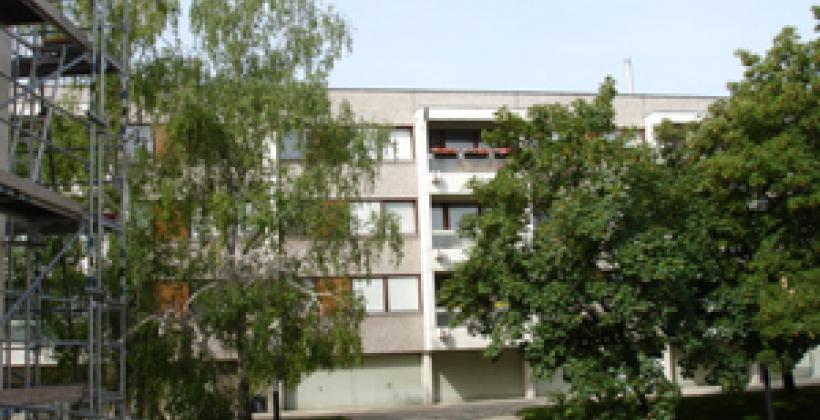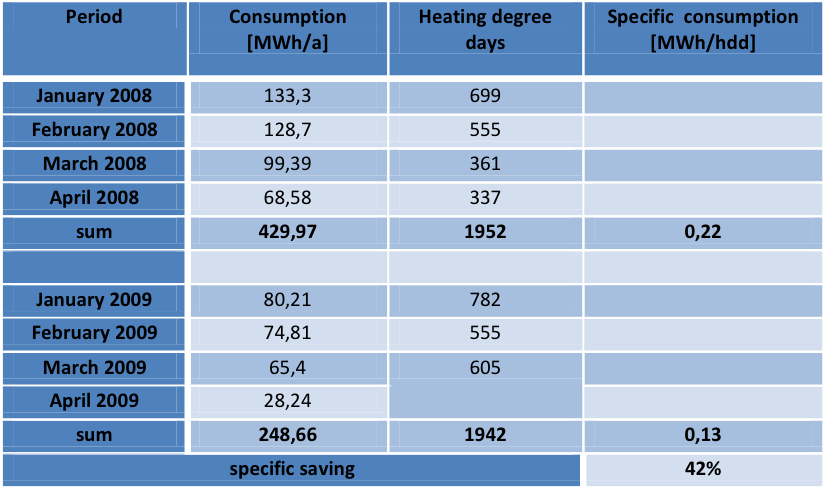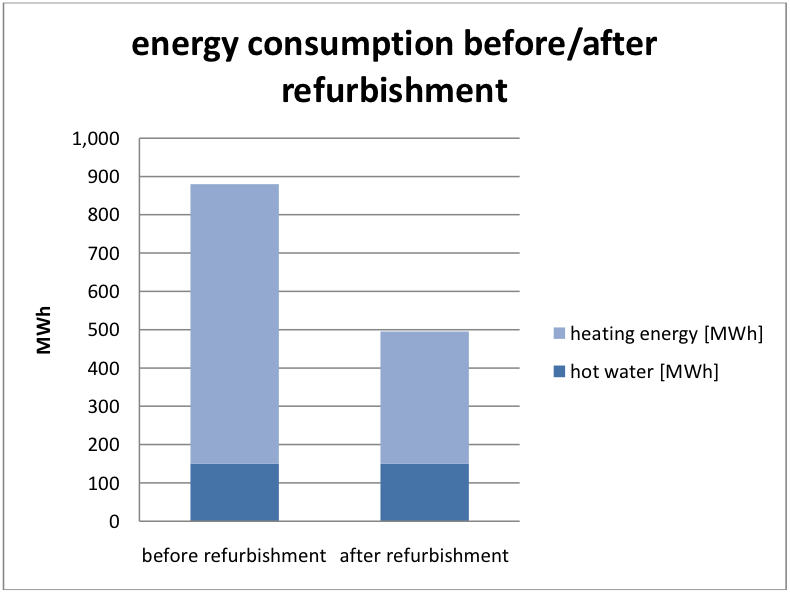
Location
Description
Mödling, a town with a population of nearly 25,000 people, is located 14 km South of Vienna. Mödling has committed itself to reduce its greenhouse gas emissions by 50% in 2010 compared to 1990. The municipality is a member of the Climate Alliance which is dedicated to fighting global warming.
Mödling is part of the CONCERTO project HOLISTIC Picture 1 - Passive House “Sol 4 Picture 2 – Photovoltaics on the roof of the Mödling fire station (9.16 kWpeak) Picture 3 – Photovoltaics at the sewage treatment plant (9.8 kWpeak) Picture 4 – The HOLISTIC team appraising the water turbine Picture 5 – Installation of the turbine Picture 6 – Installation of turbine completed Figure 1 – Functional scheme of the facility Picture 7 – Dwelling before (left) and after (right) installing insulation
Site facts and figures
- Estimated population involved: 3,600
- Approx. geographical area coverage: Information will follow
- Approx. energy saving: 886 MWh/y electricity and 756 MWhy heating
- Approx. energy from RES: 7,060 MWh/y electricity and 3,300 MWh/y heating
Technologies
Technologymix
Three social housing complexes and five kindergartens have been refurbished by measures like insulation of the building’s envelope , connection to a district heating network or replacing of windows. The police department (eco-building) and the commercial building “Sol 4” (passive house standard) have been constructed within the CONCERTO project.
At five buildings (fire station, sewage treatment plant, municipal swimming pool, 2 municipal administration buildings) photovoltaic systems with a total power of 48.22 kWpeak have been installed (Picture 2+3). They produce a predicted energy amount of 46.8 MWh per year.
A fresh water turbine of 9.5 kW power (using a head of 64 m) has been installed and produces about 24 MWh of electricity per year (Picture 4). Read details in the “more detailed” section.
A combined heat and power plant (CHP), wood bio-gasification plants and a hybrid pump storage system connected to a 30 kWpeak PV system are in the planning process. In the research field a new redox-flow-battery system for load balancing is examined, which will be controlled by an energy management system.
Fresh water turbine
Instead of reducing the pressure in the drinking water network permanently by a valve a turbine is used and produces electricity (Picture 5 + 6). The predicted annual production of electricity is 24,000 kWh, saving 14 tons of CO2 per year. The turbine has a nominated power of 9.5 kW and uses a head of 64 m (difference in height), resulting in a flow of 31 litres per second. The predicted operation hours are 2,500 per year.
Renovation of five buildings blocks
Five building blocks with 72 dwellings (total heated floor area is 4,363 m²) have been refurbished in 2008 (Picture 7). Beside technical measures as insulation and installation of new windows, there have been periodic meetings and discussions with the residents during the renovation process. The results of the evaluation were accompanied by analysing the annual invoices for heating energy.
To evaluate the effects of the performed technical measures data from the heat energy supplier “Kelag Wärme” was collected and analysed. Figure 1 shows the energy consumption of a period (Jan 2007 until Jun 2008) 18 month before and of a period (Dec 2009 until Jun 2010) 18 month after the refurbishment. The heating energy had been reduced by approximately 50%. Table 1 gives a climate corrected analysis of the heating consumption.
Annual savings of heating energy are expected to be around 380 to 40 MWh/a, which means a saving of more than 100 tons CO2-equivalent per year.

Figure 1 - Energy saving effects of the building complex

Table 1 - Specific energy savings related to heating degree days
Lessons learnt
The following information has been gathered as part of the CONCERTO Premium policy research.
Benefits of CONCERTO:
Key benefits:
Advance to a climatic protection region, to foster local energy supply and to implement energy efficiency measures on short-term. Achieve the self-sustaining energy system on the long-run.
Skill development:
6 installers and 2 representatives of property management have been involved in training.
Local economic effects:
Local investment: Roughly 50%.
Barriers encountered:
Legal barriers:
For retrofitting of apartment buildings a majority decision of the residents is necessary and might be time consuming. The thermal insulation of two facades of one apartment building were not completed, because the insulation touch the property of the neighbour. The neighbour wanted to go to court in case it had been done. To achieve a majority decision of the residents an extensive information process is necessary. Moreover the residents have to be involved in all decisions concerning retrofitting.
Technical barriers:
Lack of training in the sector especially for PV installers. Training courses have been established.
Economic barriers:
Costs for large wood gas CHPs were too high.
Social barriers:
Opposition to biomass heating plant and biogas plant. No electrician educated and experienced in installing photovoltaics. Fine dust filters, information to public, further negotiations. Amendment request: scientific assessment of wood gas CHP and existing biomass-CHP. Seminars for electricians how to install PV. Installation of PV-plants of public buildings by ATB, in cooperation with local roofer.
Administrative barriers:
Planned measures need an in-depth analysis through the communal building department. Delay in environmental statement due to public opposition. Improved political consensus.
Success factors identified:
Technical success factors:
The technologies in HOLISTIC fell into two categories – renewables and energy efficiency. In general terms, the renewables did not lived up to expectations, whereas the energy efficiency measures did generally delivered what was required of them.
Social success factors:
Different social groups could be addressed such as citizens interested in participation models and environmental matters, Christian groups.
Business models used:
Investigations came from the town council budget, from contributing third parties and home owners. In particular cases like Kindergarten Energy Performance Contracting (EPC) has been used.
Legacy – follow-on projects:
PV participation models with a capacity of 400kWp are envisaged.
The CONCERTO approach
The project´s objective is to cut emissions by 11% a year through a combination of energy efficiency measures and installing renewable energy capacity. A key aspect is the use of combined heat and power (CHP): The residual heat of the power generation process is recovered and can be used for domestic hot water or for space heating or cooling of buildings.
In Mödling, two gasification of waste wood facilities are planned for thermal use and electricity generation. In combination with an integrated PV system built into an eco-built office facility, will substantially increase the supply of renewable energy.
Thematic Field
- New Building(s)
- Refurbished Building(s)
